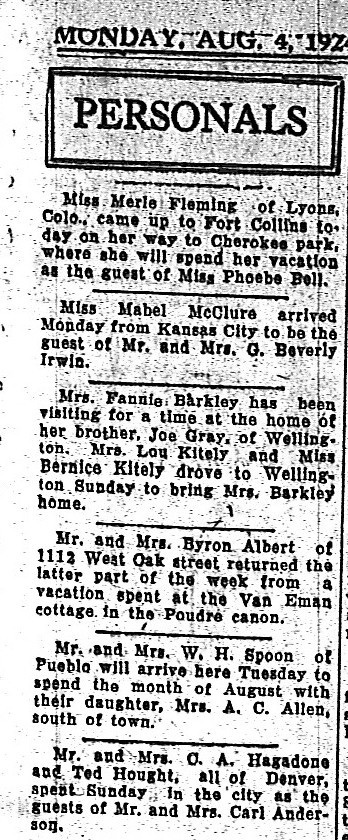by Toby J. Swaford, K-12 Education Coordinator
The Internet turns 40 this year. 1969, the same year that brought us the Apollo moon landing and Sesame Street, also saw two computers at the University of California, Los Angeles, connected for the first time. Leonard Kleinrock and his team of researchers had been charged with the task of developing the Advanced Research Projects Agency Network, or ARPANET. The idea was to allow computers to communicate with each other from anywhere on the globe.
Of course, the first step was getting two computers to share information from across the room. On September 2, 1969, Kleinrock’s team, using a length of nondescript grey cable, successfully networked two computers. A short burst of nonsensical data was transmitted from one machine to the other. It was nothing more than a test; but it planted the seed for what would follow.
After a quick gestation, the first actual message was shared between two computers on October 29, 1969. One machine, located at UCLA, was set to exchange a single word with another computer at the Stanford Research Institute. Leonard Kleinrock was only able to type the first two letters of the word “login” before the system crashed; but it was a start. Kleinrock regards those two letters, an L and an O, as “the first breath of life the Internet ever took.”
What was really important about this second test was the use of the network’s packet switching data transfer method that allowed messages to be broken down into smaller packages, which could be reassembled at their destination. The idea of breaking information down into easily managed pieces is still in use today, enabling users to share larger and larger files in shorter amounts of time.
The system continued to grow. By 1970, computers could share information from one side of the United States to the other. The following year, Ray Tomlinson, an engineer at BBN Technologies, would send the first network e-mail, choosing the “@” symbol to connect the user’s name to the host computer for no other reason than he thought it was a neat idea. A global network was created with ARPANET establishing nodes in the United Kingdom and Norway by 1973.
The 70s also saw the advent of the Internet Protocol Suite, the series of rules that computers must use to communicate over the net. Throughout most of the decade, the service was used mainly by universities and the government as a means of exchanging information quickly from one location to another. However, the groundwork had been set for something much bigger. In 1979, private companies, like CompuServe and The Source, offered the first commercial online services to the average consumer. For an initial fee, plus hourly rates, citizens could read online news and financial updates. Perhaps more importantly, those same individuals could connect to each other – chatting with people connected to the same network.
This new feature became so popular, CompuServe soon launched their CB Simulator, the first online chat service in 1980. Named after the Citizen’s Band radio phenomena of the 1970’s, this development saw everyday people interacting and contributing to the online community. Michael A. Banks, author of On the Way to the Web: The Secret History of the Internet and Its Founders, states “Lives were changed immediately. People stayed online longer and later, fascinated with the ability to interact with several people at once. The online world and its denizens took on a new aura of reality, and the online experience grew far more entertaining and unpredictable.”
Unpredictable it was. In 1988, the first computer worm, or virus, was unleashed on the net by Robert T. Morris, a graduate student at Cornell. He claimed it was an experiment gone awry. Prosecutors saw things differently. Morris was fined $10,000, plus three years of probation and community service. He would later go on to success, joining a company that was eventually purchased by Yahoo, and becoming a professor of computer science at M.I.T.
Online services continued to grow. America Online was introduced in 1989, reaching over a million users, one third of the online community, within five years. 1990 saw the phrase “World Wide Web” coined by British scientist, Tim Berners-Lee. While many use the terms Internet and Web interchangeably, they are not the same. The Internet hosts the World Wide Web, which Berners-Lee created while working at the CERN research facility in Switzerland.
The 90s would see the Internet and World Wide Web grow in leaps and bounds. Mosaic, the first browser that featured text and pictures became available to consumers in 1994, the same year that Yahoo was founded. 1995 saw online retail operations revolutionized by Jeff Bezos’ Amazon.com. Google, named after the mathematical term for a 1 followed by a 100 zeros, was incorporated by Larry Page and Sergey Brin, two computer science engineers in 1998.
1999 saw Craig’s List, which started four years earlier in San Francisco, go global. Today, the service can be found in more than 700 cities and in 70 countries. That same year, web logs, or blogs, went mainstream with the advent of Blogger, a user-friendly platform. Blogs have since become an important communication tool used by individuals and institutions to share what’s on their minds. (Hello, there.)
The 21st century continues to move the online experience in new directions, connecting people in new and exciting ways. YouTube, My Space, Facebook, Flickr, and Twitter have become a part of many people’s daily lives. Over a million articles have been posted to Wikipedia; and, thanks to the diligence of the online editing community many of them are now accurate.
All together, the Internet has more than one billion regular users – including you. Let us know how the Internet affects your day-to-day life.







You must be logged in to post a comment.